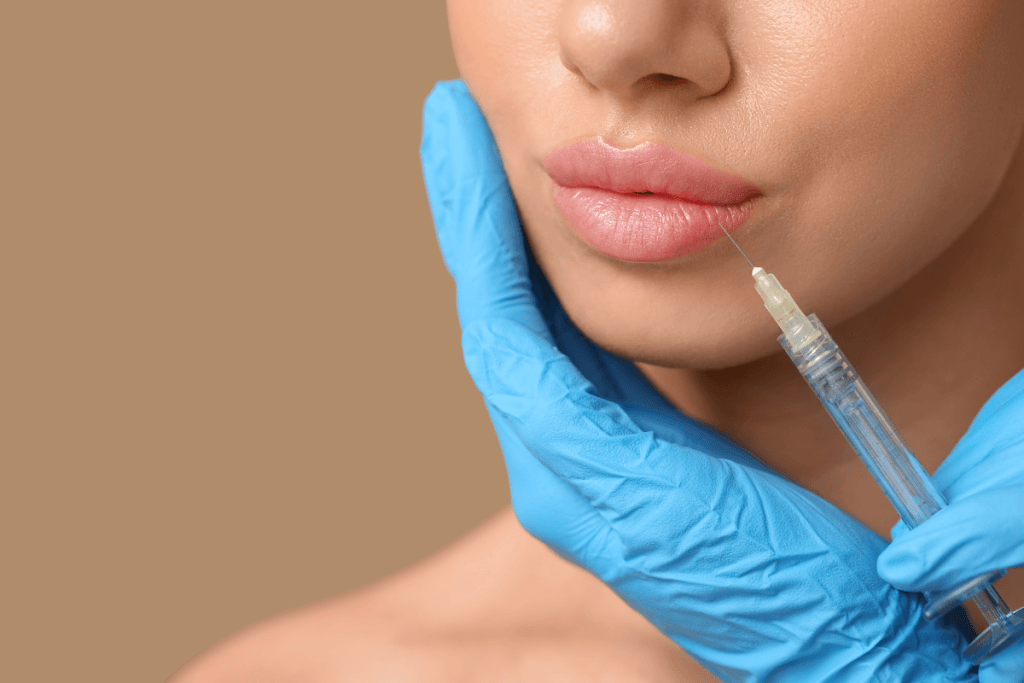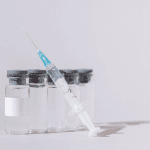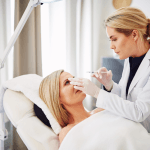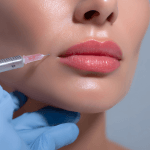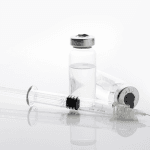Lip augmentation with dermal filler is a high-visibility procedure. Patients quickly notice small changes. That is why clinics routinely hear one core question: how long do lip fillers last. A good answer blends biology, product selection, technique, and aftercare realities. It also sets expectations around “before and after” timing, normal swelling, and revision pathways.
This guide is written for licensed healthcare providers and clinic teams. It focuses on practical counseling points and operations. It does not cover dosing, injection technique, or patient-specific recommendations.
Key Takeaways
- Duration varies by product, patient factors, and placement depth.
- Swelling can mask results for days to weeks.
- Photo standards reduce disputes about “before and after.”
- Plan for corrections, including dissolution workflows.
- Document lot details, consent, and outcomes consistently.
How Long Do Lip Fillers Last in Practice?
Most lip fillers used in clinics are hyaluronic acid (HA) gels. HA is a sugar molecule found naturally in skin. In fillers, it is crosslinked to slow breakdown. Over time, the body gradually metabolizes the gel. Clinical longevity can vary widely between patients and products. Variability is normal, not a “failed” treatment.
In operational terms, durability is best framed as a range. Align that range to your clinic’s follow-up cadence. Then clarify that early swelling and late softening can change appearance. This keeps your documentation, photo timing, and touch-up policies consistent.
What Influences Longevity
Longevity is rarely driven by one factor. Product rheology (how a gel flows and holds shape) can influence how it integrates and resists deformation. Placement plane and total volume matter too. Superficial placement may look different over time than deeper placement. Patient-level factors can also shift persistence. These include baseline lip tissue, facial movement patterns, prior filler history, and general metabolism.
Operationally, you can standardize expectation-setting with a brief “durability script.” Tie it to what the patient can observe: early swelling, mid-course settling, and gradual fade. You can also point patients toward your educational materials on HA options, without turning the discussion into a brand debate. For background reading, link patients to your clinic’s preferred explainer and keep it consistent across providers. A starting point for staff training is the overview in Types Of Lip Fillers.
Are Lip Fillers Permanent?
HA-based lip fillers are generally considered temporary. They can be reversible with hyaluronidase (an enzyme that breaks down HA) when clinically appropriate. Non-HA fillers exist, but they have different risk profiles and correction options. Many “permanent” claims seen on social media are marketing language or misunderstandings. Your safest posture is conservative: explain that results fade, timelines differ, and revisions may be needed.
Why it matters: Clear permanence language reduces regret-driven calls and chargebacks.
Setting Expectations With Lip Filler Before And After Photos
Photo documentation is where clinics can gain the most clarity with the least effort. Many disagreements arise from timing. Patients may compare day-of images to a “healed” look. They may also compare themselves to a lip filler before and after celebrity montage, which often mixes lighting, makeup, and filters. Setting “photo rules” protects both patient satisfaction and chart defensibility.
Standardize your photo workflow across all injectors. Use the same camera, focal length, and lighting. Keep head position consistent. Capture relaxed lips, gentle smile, and profile views. Note recent lip products or irritation that could change appearance. Save all images to the medical record with dates and visit context.
Supply access should be limited to verified licensed healthcare accounts.
Photo Standards That Reduce Miscommunication
Write down when “before and after” should be captured. Many clinics do immediate post images, then a later “settled” set. Do not promise a specific day as the final look, since edema and bruising vary. Instead, describe the purpose of each set. Immediate photos document injection-related swelling and contour changes. Later photos document the outcome after tissue calms. When patients search for lip filler before and after healed, they are often looking for that later set.
Also clarify how volume is represented. Patients may request lip filler before and after 1ml images, expecting a universal look. In reality, 1 mL can create different visible change depending on baseline anatomy and distribution. Keeping consistent angles helps you show proportional change rather than “more or less.”
Quick tip: Keep a single-page photo consent addendum for marketing versus medical record use.
Normal Recovery: Lip Filler Swelling Stages And Aftercare Boundaries
Recovery counseling should separate what is common from what is concerning. It should also emphasize that post-procedure appearance is not a clean proxy for durability. Patients often ask how long do lip fillers last before and after, but they are sometimes describing swelling resolution rather than filler persistence. Your team can reduce confusion by naming the phases and setting realistic “look” milestones.
Swelling and bruising are influenced by injection technique, lip vascularity, medications or supplements, and patient behaviors. Even when everything goes smoothly, the lips can fluctuate with hydration, salt intake, and activity. Consider adding a short written handout that mirrors the language used in the consult. For general staff refreshers, see Post-Treatment Care Essentials.
A Practical Way To Describe Swelling
A common pattern is early puffiness in the first 24–72 hours, followed by gradual settling over the next several days. Some patients notice firmness, asymmetry, or small palpable areas during early healing. These often soften as swelling resolves and the gel integrates. If you counsel that “final” appearance can take time, you can reduce day-two panic calls without dismissing legitimate concerns.
Keep the language non-alarming. Avoid over-precise timelines that can be used against your team. Document what you told the patient, including uncertainty and variability. That note becomes important if a patient later cites online stories, such as lip filler swelling stages threads on social platforms.
What Not To Do After Lip Fillers (General Counseling Points)
Aftercare instructions differ by practice and injector. Still, many clinics use similar guardrails to reduce swelling and minimize mechanical pressure. Present these as general boundaries, then defer to your clinic’s written instructions. Avoid framing them as guarantees. Emphasize that patients should contact the clinic if they are unsure.
- Heat exposure: avoid saunas and hot yoga early.
- Mechanical pressure: avoid lip massage unless instructed.
- Alcohol use: consider limiting around the procedure window.
- Strenuous exercise: consider pausing briefly post-treatment.
- Makeup on entry sites: delay per clinic protocol.
- Dental work: schedule thoughtfully around recent injections.
This is also a good place to set boundaries on self-diagnosis. Patients may bring in screenshots of dermal fillers side effects photos and assume the worst. A calm, staged explanation helps them interpret what they see without minimizing safety.
Safety Profile: Lip Filler Side Effects And Long-Term Concerns
Lip filler side effects are usually mild and self-limited, such as transient swelling, tenderness, bruising, or temporary lumpiness. However, clinics should always counsel that serious adverse events can occur. These include infection, hypersensitivity reactions, and rare vascular complications. Your process should prioritize rapid recognition and escalation pathways. This is a clinical governance issue, not just patient education.
Plan how your team handles “day-of” concerns, weekend calls, and documentation of symptom reports. Document the exact description provided by the patient. Note timing, progression, and any associated symptoms. Even if a concern resolves, the record matters.
Inventory is sourced through screened distribution partners to support product authenticity.
Long-Term Effects: What We Know And What Patients Ask
Patients increasingly ask about long-term side effects of lip fillers and hyaluronic acid fillers side effects long-term. They may also combine topics, asking about long-term effects of fillers and botox in the same conversation. Your response should be measured. Explain that HA fillers have a long history of use, but long-term outcomes can still vary. Some delayed issues have been reported, including persistent nodules, inflammatory reactions, or tissue texture changes. Prior treatment history can complicate interpretation.
It also helps to address “regret narratives” directly. Terms like lip filler regret reddit and lip filler before and after bad often reflect expectation mismatch, inappropriate comparisons, or poor follow-up. You can reduce this by documenting goals in plain language, showing realistic photo examples, and setting a clear revision policy. If you maintain a structured pathway for evaluation, you can address concerns before they escalate into reputational harm.
Clinic Workflow, Documentation, And Cost Conversations
Patients often ask about lip filler cost in the same breath as outcome questions. They may phrase it as how much do lip fillers cost, how much does lip filler cost, or even lip filler cost 1 syringe. Some will ask how much does 1ml of lip filler cost or how much does 0.5 ml of lip filler cost, expecting a universal answer. Your staff needs a consistent framework that is transparent, compliant, and easy to repeat.
Avoid quoting as if filler were a commodity. Pricing varies by product, injector expertise, clinical time, facility overhead, and follow-up structure. If your clinic quotes by syringe, clarify what “syringe” means in your practice. If you quote by area or outcome tier, define what is included. Also be careful with social-media benchmarking. Terms like lip filler cost reddit reflect anecdotal reports that may exclude consult fees, follow-ups, or complication management.
MedWholesaleSupplies supports licensed clinics with brand-name products from vetted distributors.
Clinic Workflow Snapshot (High Level)
A simple, repeatable workflow reduces errors and supports traceability. Adjust steps to your local regulations and policies.
- Verify: confirm licensure and authorized clinical use.
- Document: record consent, goals, and pre-procedure photos.
- Select: choose product class based on indication and plan.
- Receive: log lots, expiry dates, and packaging condition.
- Store: follow manufacturer storage requirements and access controls.
- Record: capture product identifiers in the patient chart.
- Follow up: standardize check-ins and outcome photography.
If your team is building a training library, use a single internal hub for product-class education. Start with browseable overviews like Dermal Fillers Hub and Hyaluronic Acid Fillers. Keep your procurement language compliance-forward. If you operate across US distribution channels, align recordkeeping to the strictest site requirements.
Correction Planning And Dissolution Readiness
Even with careful planning, some patients will request change. They may dislike shape, feel asymmetry, or experience delayed inflammatory symptoms. Clinics should have a documented pathway for assessment and correction. This includes criteria for in-person evaluation, photo review standards, and escalation steps when symptoms raise concern. For staff education, map your approach to a single resource like Dermal Filler Removal Options.
When HA dissolution is clinically appropriate, patients often ask, do lips go back to normal after filler dissolved. The conservative answer is that many people return close to baseline, but individual tissue history matters. Prior fillers, scarring, or repeated stretching can influence feel and appearance. If your clinic discusses hyaluronidase, keep it factual and policy-based. A neutral explainer can live alongside a reference such as Hyaluronidase Correction Overview.
When you mention specific products, keep the discussion tied to documentation and indication fit. For example, a clinic may stock a lip-indicated HA option such as Juvéderm Volbella With Lidocaine and maintain a separate, clearly controlled supply of Liporase Hyaluronidase 1500U for correction workflows. Policies vary by jurisdiction, so confirm requirements before implementation.
Authoritative Sources
Use primary sources for safety language, adverse event framing, and patient handouts. Keep your team aligned to regulator and specialty-society guidance.
- FDA: Dermal Fillers (Soft Tissue Fillers)
- American Academy of Dermatology: Fillers Overview
- American Society of Plastic Surgeons: Dermal Fillers
When patients ask how long do lip fillers last, the most helpful response is structured and documented. Define the difference between swelling resolution and product longevity. Use standardized photos to show “settled” outcomes. Then keep your sourcing, traceability, and correction pathways ready for the small percentage of cases that need them.
This content is for informational purposes only and is not a substitute for professional medical advice.


